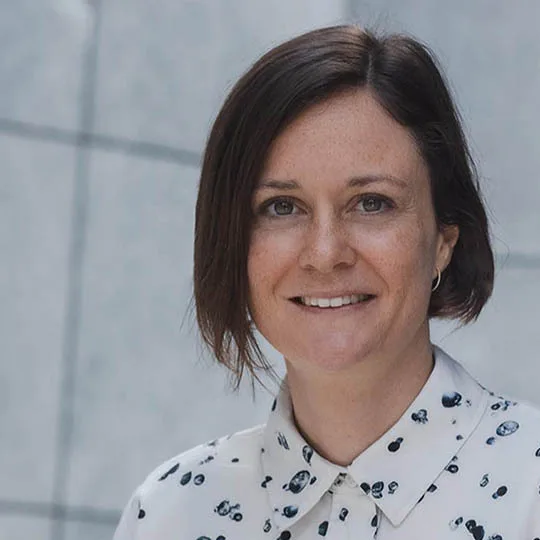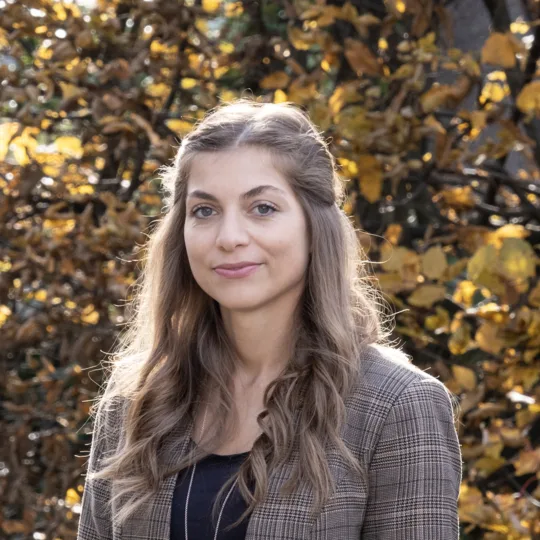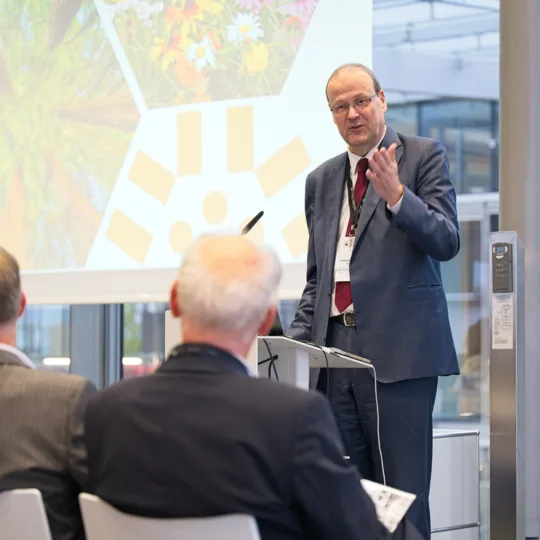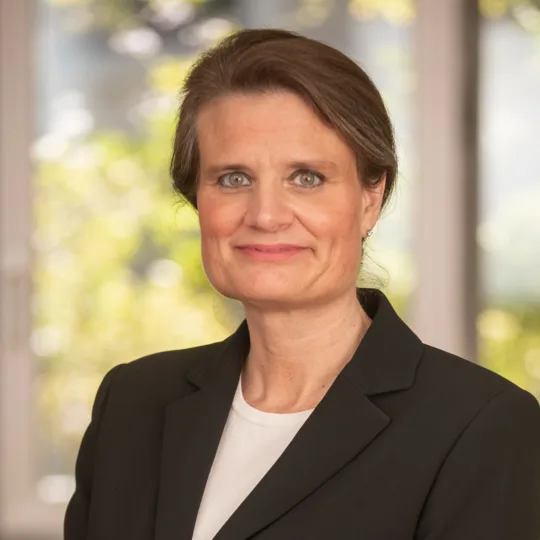«I admire this shared drive to be part of something larger.»
Anna Fontcuberta I Morral became president of EPFL (Swiss Federal Institute of Technology Lausanne) at the beginning of 2025. Here she talks to us about her new role, EPFL’s strengths and priorities, and her passion for physics.
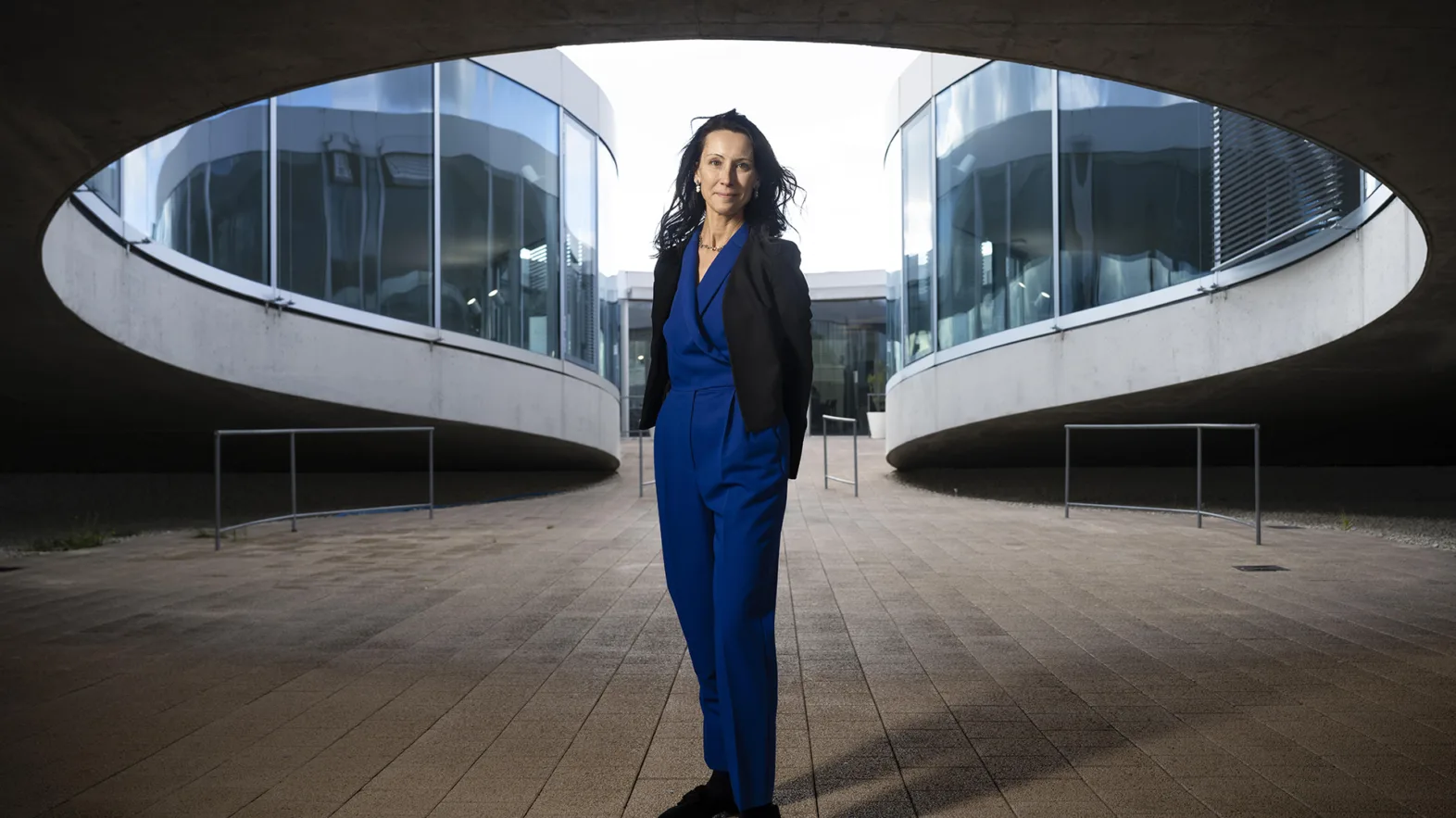
You took over as president of EPFL in January 2025. How have your first few months been? What has surprised you most?
It’s been incredibly demanding – but also very exciting. The nine-month transition period allowed me to assess where we stand and develop the collaborative approach I wanted to implement. My main focus since January has been assembling my new team, which is essential for moving forward with confidence. When you have a leadership change at an institution like this, it’s a rare opportunity to make meaningful shifts – with all the potential and risks that entails. It’s rather like research – you need to create space to experiment and improve.
What does a typical day look like for you as president of EPFL?
It’s a mix of academic leadership, management and administrative work. There’s also considerable public engagement and outreach – helping people understand how we serve society.
Like my predecessors, I’ve maintained a small presence in my lab, though my research is much more focused now. I think it’s vital to stay grounded in the day-to-day reality of what we do here – and for an institution like ours, that means teaching and research.
What would you say are EPFL’s greatest strengths?
EPFL has a relatively compact campus – with almost 18,000 people, of whom 14,000 are students – and an incredibly vibrant research and learning environment. What’s remarkable is how passionate and entrepreneurial everyone is, both students and faculty. I admire this shared drive to be part of something larger, to contribute to society.
What are your key priorities as president?
My goal is to maintain world-class conditions for both study and research. We need to adapt what we teach, how we teach, and how we approach and conduct research – particularly given the AI revolution, which I see as an opportunity, despite the challenges it brings. There’s so much to reimagine: how we deliver teaching, how we advance scientific knowledge, and how we can streamline some of the more routine administrative tasks. With AI now part of practically everything we do, this also gives us more space for reflection, human connection and collaborative thinking.
Another priority is managing our growing student numbers. We’ve just broken ground on a major construction project at the heart of the campus, and this will provide us with 1,500 additional seats in modular lecture halls once it’s completed in four years.
Profile
Born in 1975, Anna Fontcuberta i Morral grew up in the Barcelona region, where she studied physics. After completing her PhD at École Polytechnique in Palaiseau, France, she conducted postdoctoral research in the US and France, and later earned her habilitation in experimental physics at the Walter Schottky Institute of the Technical University of Munich in 2009. She joined EPFL’s Institute of Materials in 2008, becoming Associate Professor in 2014 and Full Professor in 2019. With her research team and doctoral students, she studies the physics of semiconductor nanostructures. Her work has earned numerous awards.
What challenges are EPFL and ETH Zurich currently facing?
Staying at the forefront – especially as the number of scientific and technical fields that impact daily life continues to expand rapidly. This means we need to work out what will matter most in the years ahead.
EPFL is also under financial pressure; the federal debt brake has meant less government funding for the ETH Domain. For this year and next, we still have reserves we can draw on. We want to use this window to reassess our priorities and determine which activities to maintain, scale back or potentially phase out. At the same time, we’re stepping up efforts to secure more external funding, particularly through philanthropy. But ultimately, it means we’ll probably have to achieve more with fewer resources.
You studied physics in Spain. What initially drew you to the field, and what continues to fascinate you about it?
I was always drawn to subjects you ‘just’ need to understand – like mathematics – rather than those requiring lots of learning by rote. Once you put in the effort to truly grasp something, it opens up incredible possibilities. Realising this was a turning point for me and helped shape my future interests. Physics feeds my curiosity about how the world works, which I find endlessly fascinating.
I've also long been intrigued by matter itself – understanding where its properties come from – which naturally led me to materials science. Physics shapes the way we think and solve problems, and that’s a skill that extends far beyond the discipline itself.
You’re the first woman to lead EPFL, and you’ve built a career in a field that’s still largely male-dominated. What advice would you give to young women in research?
I really don’t think “first woman to lead...” should still be making headlines in 2025. In 1992 EPFL had just one female lecturer; today there are 91 women among 350 full-time equivalent faculty positions. Things are evolving naturally, and having visible role models is encouraging more young women to pursue careers in science. We’re actively supporting that momentum through school outreach programmes and events like the Scientastic festival, where girls can explore science and technology hands-on in EPFL’s labs.
Finally, looking to the future: where do you expect major scientific and technological breakthroughs, and what role will EPFL play?
As a federal technology institute with a global reputation, EPFL plays a pivotal role in advancing fundamental research while driving innovative solutions for society. We’re seeing major breakthroughs in areas such as AI and machine learning, healthcare and medical technologies, sustainable energy and climate solutions – and, of course, quantum science. These are all fields where we have passionate, dedicated teams working across multiple laboratories. To better coordinate these efforts and maximise their impact, I’ve established a new vice presidency specifically focused on these strategic priorities.
Contact
Author
